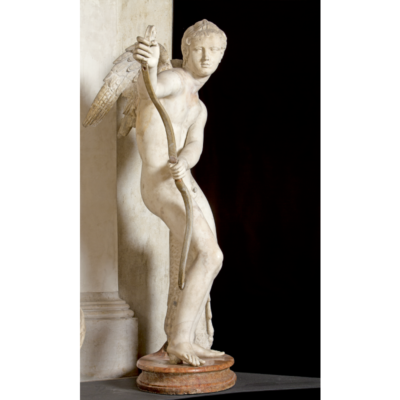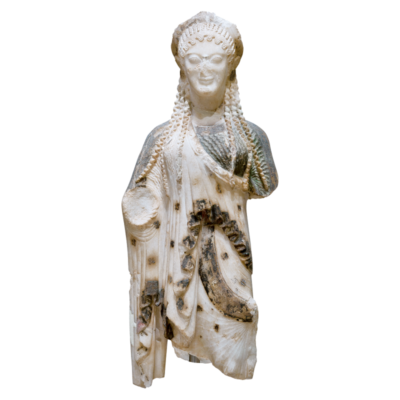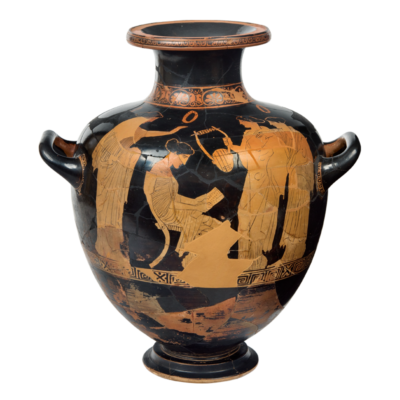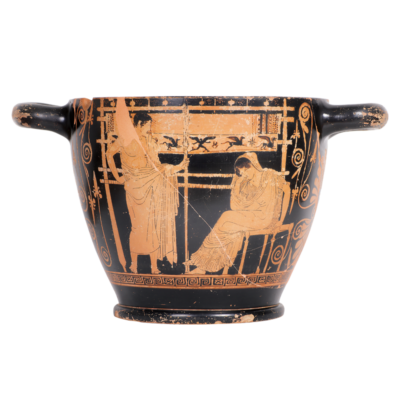Theseus & Antiope

From the temple of Apollo Daphnephoros in Eretria. 510 – 500 BC. Archaeological Museum of Eretria ΜΧ 4.
© Hellenic Ministry of Culture and Sports/Ephorate of Antiquities of Euboea/H.O.C.RE. D. Photograph: Irini Miari.
Archaic marble sculptural group depicting the king of Athens, Theseus, abducting Antiope, the queen of the Amazons.
In this sculpture, the main theme presented to us is the restrained desire of Theseus and the submission of the queen of the Amazons, Antiope, depicted with grace.
The delicacy of their hand movements, the sweetness of their facial expressions and the way the tight embrace of the two bodies is rendered—despite the theme of abduction—looks anything but violent.
In essence, we are watching the submission of nature and wilderness (Antiope) to civilization, represented here by Theseus. Thus, by combining these elements, the artist wanted to capture the harmony that arises through the relationship between humans and nature.
SEARCH AND LEARN
• Learn about the king of Athens, Theseus.
• Learn about the queen of the Amazons, Antiope.
• What are Amazons in mythology and what do they symbolize?
• Learn about the abductions of gods and mortals in mythology.
OBSERVE…
• the expressions on their faces. Which elements result to the overall serenity of the scene?
DID YOU KNOW THAT…
the Amazon symbolizes wilderness (nature) while Theseus symbolizes civilization?
Some of the elements that characterize civilization are:
→ Reason, language, law, art, science, and craft.
Some of the elements that characterize nature and the wilderness are:
→ Instinct, chaos, the raw, the untamed, and the unknown.
TOPICS FOR DISCUSSION
• In Greek, the noun for “human” is male: Ο ΑΝΘΡΩΠΟΣ. Archaic and Classical art gives substance to this very concept. Discuss this in the classroom.
• Discuss the relationship between Humans and Nature




